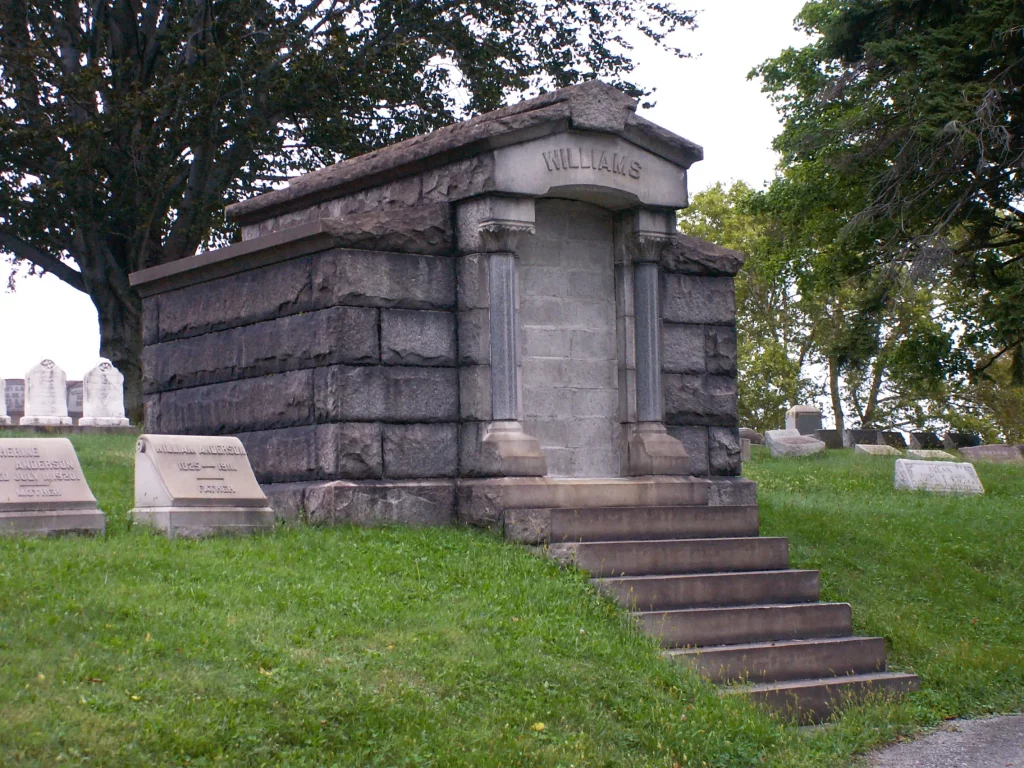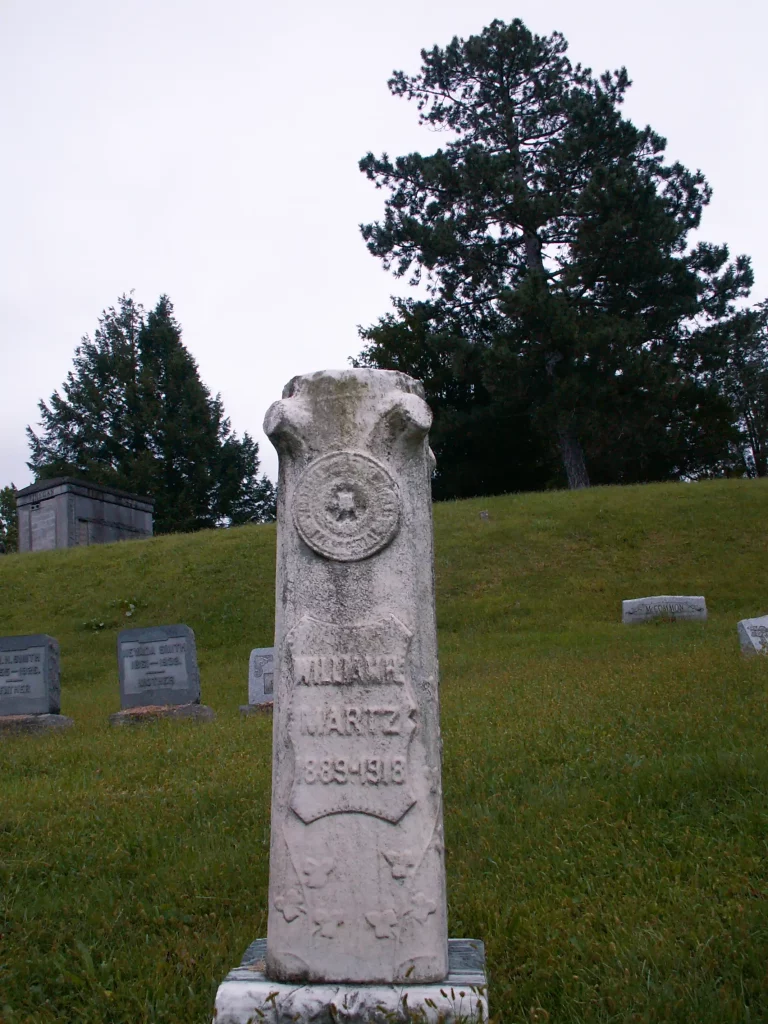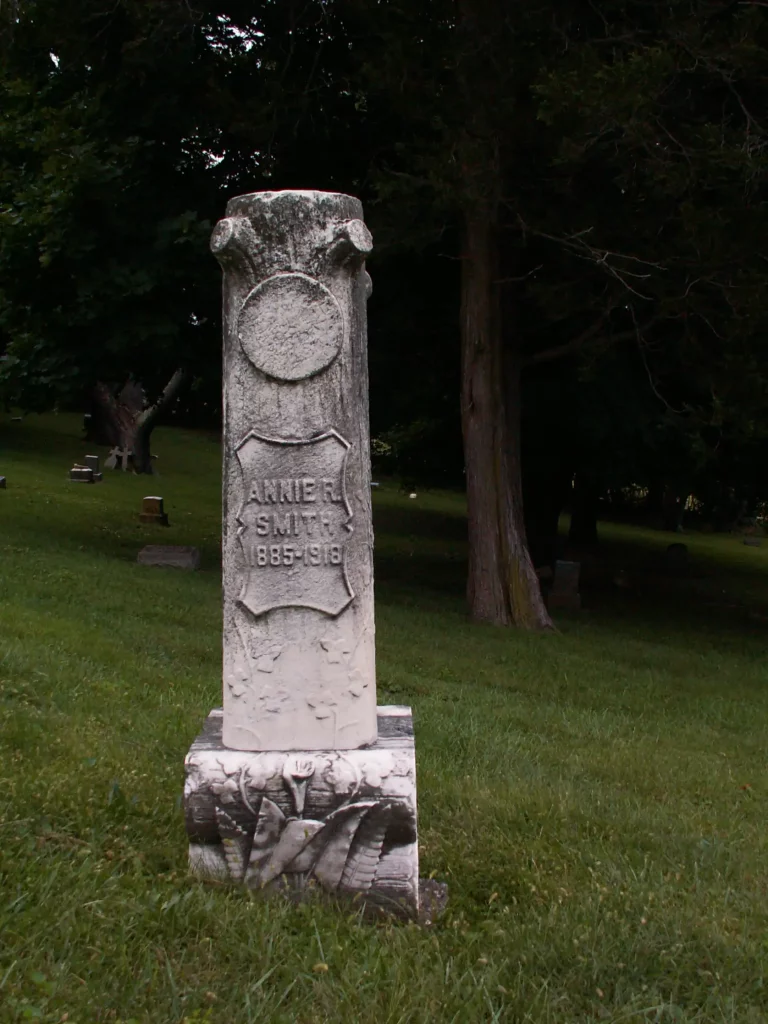

The McFarlanes were early settlers in the South Hills; in fact a McFarlane donated some of the land for this burying-ground. This child died at five and a half years old; and though his epitaph is partly buried, it is a famous quotation, which we give here in full:
Read this and weep—but not for me;
Lament thy longer misery.
My life was short, my grief the less;
Blame not my haste to happiness.
This poem was quoted by Benjamin Franklin (from whom perhaps the McFarlanes took it) and many others as occurring on a tomb in a small English village, and so it did. But Father Pitt, with the aid of the all-knowing Internet, has done a bit of original research for you, and believes that he has traced the source ultimately to a poem in the back pages of a magazine.
In a very scholarly book of Admissions to the College of St. John the Evangelist, we find a note saying that the poem occurs on a monument in the church of Elton, Northamptonshire, where a child named Elizabeth Richardson Standish was buried; she died in May (the date was illegible) of 1731.
But old Pa Pitt has found the poem published in the Gentleman’s Magazine for April 1731. What could be more natural than that the bereaved father should remember a consoling poem titled “An EPITAPH on the Tomb Stone of an Infant” from last month’s magazine, and cause it to be engraved on his daughter’s monument?
As for this tombstone, it is a splendid effort by the local stonecutter, with a tree (perhaps a weeping willow?) and some fine pen-like flourishes. Those things more than make up for the little difficulty with fitting the final E in the name “McFarlane.” Following his usual method, Father Pitt calls this artist the Master of the Extended Bowls, from his easily identified trick of extending the bowls of letters like P, R, and D upward into a swooping flourish. We also find his work at least as far out as Canonsburg.





